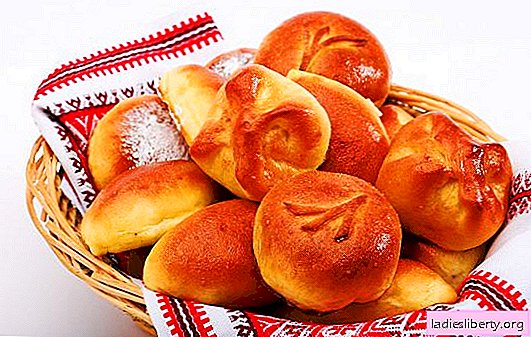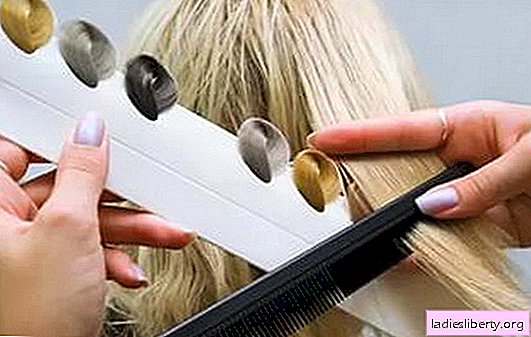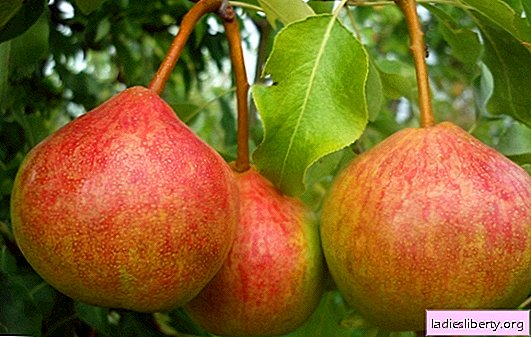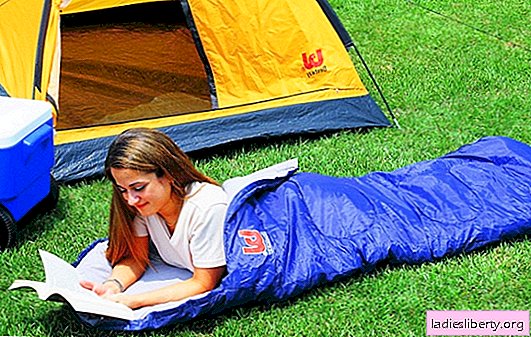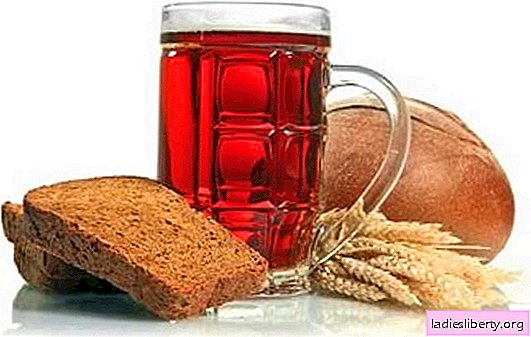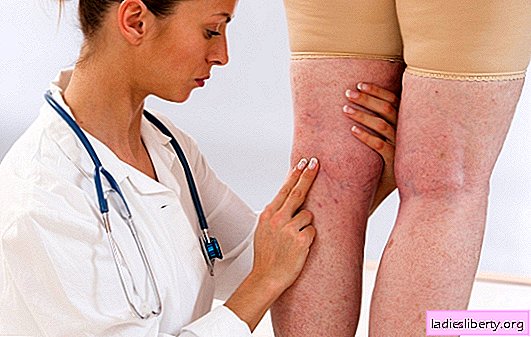
Varicose veins are the expansion of the superficial sections of the veins that resemble nodules and cause pain, swelling and thrombosis. They are found mainly on the feet. The initially visible varicose vessels do not cause concern. They indicate a venous system disorder, which can have serious consequences. An early symptom is discomfort in the lower limbs.
Women are significantly more likely to suffer from varicose veins than men. A common cause is congenital weakness of the venous walls and valves. Early therapy can prevent further complications.
Causes of varicose veins
Primary varicose veins are due to weakness in the innate connective tissue. Recent studies show that heredity plays a smaller role than previously thought. The importance of risk factors appears to be higher than previously thought. Primary varicose veins account for more than 9 out of 10 cases.
Secondary varicose veins are caused by an unhealthy lifestyle that changes blood flow in the vessels of the lower extremities. A blood clot can block a deep vein in the legs or pelvis, so the body creates workarounds. Since the "bypass" veins are not large enough, they expand and become varicose.
Treatment of varicose veins with folk remedies at home should be carried out under the supervision of a doctor. Identification of the root cause is the task of the doctor. If diagnosed, the patient can use traditional medicine methods.
Treatment of varicose veins with folk remedies at home: phytotherapeutic methods
1. 1 tablespoon chopped hop cones, pour boiled water and cook for 30 minutes. Apply the cooled broth to the affected area.
Doctor's comment: hops contain 2-methyl-3-buten-2-ol, which has been found to have an anxiolytic effect in animal experiments. In addition, the resin contains chalcones (xanthohumol), 0.5-1.5% flavonoids and 2-4% tannins. Xantohumol has a slight antibacterial effect.
Hop oil contains more than 150 individual substances, including mono- and sesquiterpenes (myrcene, humulene and β-caryophyllene, farnesenes) and various fatty acid esters in large quantities.
Hops contain a small amount of estrogen, among which the most powerful than flavonoids is 8-prenylnaringenin. An insignificant antimicrobial and anti-tuberculosis effect was also revealed with oral use.
According to clinical studies, prolonged consumption of hop extract strengthens the walls of the veins and improves the return of blood to the heart. The effect is due to the presence of venotizing bioflavonoids. A prescription can help improve the structural and functional state of venous vessels with continued use.
2. Apple cider vinegar.
Doctor's comment: Apple cider vinegar is great for preserving vegetables. The acids in apple cider vinegar - malic acid, acetic acid, citric acid - have antimicrobial and antifungal effects.
With varicose veins, apple cider vinegar is useless, since there are no active substances that have a venotizing effect.
3. Grind the wormwood grass and mix with olive oil. Insist the resulting mixture for 2-3 days, filter and take every day.
Doctor's comment: wormwood contains 0.18-1.4% of essential oil, 2-3% of abrotanin and bitter substances. The main component is either 1,8-cineole (up to 60%) or thujone (up to 70%). Other ingredients: sabinen, α-caryophyllene and β-caryophyllene. Non-volatile ingredients are the alkaloid abrotin, coumarins (isofraxidine, umbelliferone), flavonoglycosides (rutin) and flavonol free esters (various quercetin dimethyl esters). The bitter taste is caused by sesquiterpene lactones and rutoside.
Rutoside (vitamin P) is used in modern medicine to treat septic endocarditis, rheumatism, hemorrhagic diathesis and varicose veins. Venotoxic effects were confirmed by a 2013 meta-analysis. The recipe is useful, but wormwood is toxic in high doses.
4. Grind the nettle leaves in a coffee grinder, mix with milk and moisten the gauze dressing with a solution. Apply a bandage 3-4 times a day.
Doctor's comment: nettle is used to treat bleeding from gums and anemia. The plant can be used for diseases such as bronchitis, diabetes, acne, rash. Nettle seeds also support breast milk production.
The clinical efficacy of nettle with varicose veins has not been identified. Treatment of varicose veins at home with folk remedies with wormwood will not bring any benefit.
Treatment of varicose veins with folk remedies at home: dietary recommendations
1. Cut the potatoes into two parts. Apply 1 part to the affected area and tie with a medical bandage.
Doctor's comment: Potatoes are easy to digest and have high nutritional value. Potato tubers contain approximately 78% water and 18% starch. The rest consists of various amounts of proteins, minerals and about 0.1% lipids. Potatoes contain vitamin C, riboflavin, thiamine and niacin. Potatoes consumed with peel are an excellent source of fiber.
Raw potatoes when applied locally are not effective for varicose veins. No substances were found that affect the vascular wall or venous valves. If potatoes are taken orally, the return of blood to the heart may improve due to riboflavin. The recipe is useless when applied topically.
2. Garlic oil.
Doctor's comment: Being also an excellent digestive stimulant and diuretic, it is used for anorexia and edema. Garlic oil reduces the concentration of lipids in the blood and has a strong anticoagulant effect.
Long-term use of garlic oil reduces the risk of thrombosis and promotes blood thinning. In the long run, garlic helps prevent varicose veins, but it is not effective in treating the underlying cause of the disease. Garlic oil will help prevent pulmonary thromboembolism - a dangerous complication of varicose veins.
3. Take foods that are rich in vitamin C.
Doctor's comment: Ascorbic acid and its sodium, potassium and calcium salts are commonly used as antioxidants. These compounds are soluble in water, so they do not protect fats from oxidation. For this purpose, fat-soluble esters of ascorbic acid with long chain fatty acids (palmitate and ascorbyl stearate) can be used.
The use of vitamin C in a high dose does not prevent the occurrence of varicose veins. In the absence of actual hypovitaminosis C, the additional use of the active substance will not bring any benefit. Advice will not help get rid of the disorder.
4. Burdock root.
Doctor's comment: dried burdock roots contain mucus, acetylenesulfonic compounds, polyacetylenes and components of the bitter guanyolide type. They are used in western folk medicine as a diuretic, diaphoretic and anticoagulant.
Other parts of the plant are used to prevent baldness and treat rheumatoid arthritis, skin infections, acne, bites and varicose veins. Greater burdock seeds are used in traditional Chinese medicine, especially for skin diseases.
Burdock is rich in venotonic flavonoids: diosmin and hesperidin. Decoction from the root improves the function of venous vessels and the return of blood to the heart. The recipe is useful, but should be taken in limited doses and not more than 14 days in 3 months.
Treatment of varicose veins with folk remedies at home: dangerous means
1. Self-administration of coumarin anticoagulants
Doctor's comment: Coumarin is moderately toxic to the liver and kidneys, with an average lethal dose of LD50 of 275 mg / kg. Although in some cases, Kumari is dangerous to humans, it is more hepatotoxic in rats (less in mice). People metabolize it to 7-hydroxycoumarin, a less toxic compound.
The use of coumarin in large doses can pose a threat to human life. Cases of lethal bleeding and circulatory disorders were recorded. Advice is extremely dangerous. Coumarin compounds are forbidden without the recommendation of a doctor.
Treatment of varicose veins with folk remedies at home will not harm, but it will not bring much benefit either, if the root cause is not identified. Patients need to see a doctor and treat the causative disease. If you can’t identify it, you can resort to traditional medicine.

